Abstract
Previous discovery that Drosophila melanogaster females tend to discriminate in mating against phenotypes of earliest courting males prompted a study of the Hawaiian species D. silvestris. Tibial bristle variation in males from opposite coasts of the island of Hawaii functions in courtship, and the possibility that females can distinguish males differing in the tibial trait is explored. Mating tests, designed to give each female and male an alternative choice between two individuals of opposite sex every 30 min, consisted of intrapopulation tests with a strain derived from an eastern (Kilauea) population and interpopulation tests between that strain and one derived from a western (Kahuku) population. Males were given initial combat tests, with “winners” then used in mating (except one test with “loser” males). Matings (52-55%) were classified into categories according to the readiness of the female to mate and sequence of courtship. Low-threshold females (accepting the first male after less than four courtship bouts) occurred at 30-35%. Among intrapopulational tests, females (with higher threshold) accepted first- and second-courting males about equally (25:36, respectively), but for male success in mating, the winning of initial intermale combats and the uniformity of courtship effort tended to be important criteria. Among interpopulation tests, homogamic matings were nearly equal (25% each), but heterogamic matings contrasted in that Kilauea females were reluctant to mate with Kahuku males (14%), while reciprocal matings occurred most frequently (34%). Females favored males second to court, particularly when a Kilauea male (with extra tibial bristles) was the second male. Thus a morphological feature likely to be influential in mating is demonstrated to be so; and sexual selection is operating via male-male combat plus discrimination in favor of particular opposite-sex individuals in this species.
Keywords: behavior, evolution, courtship, reproduction
Full text
PDF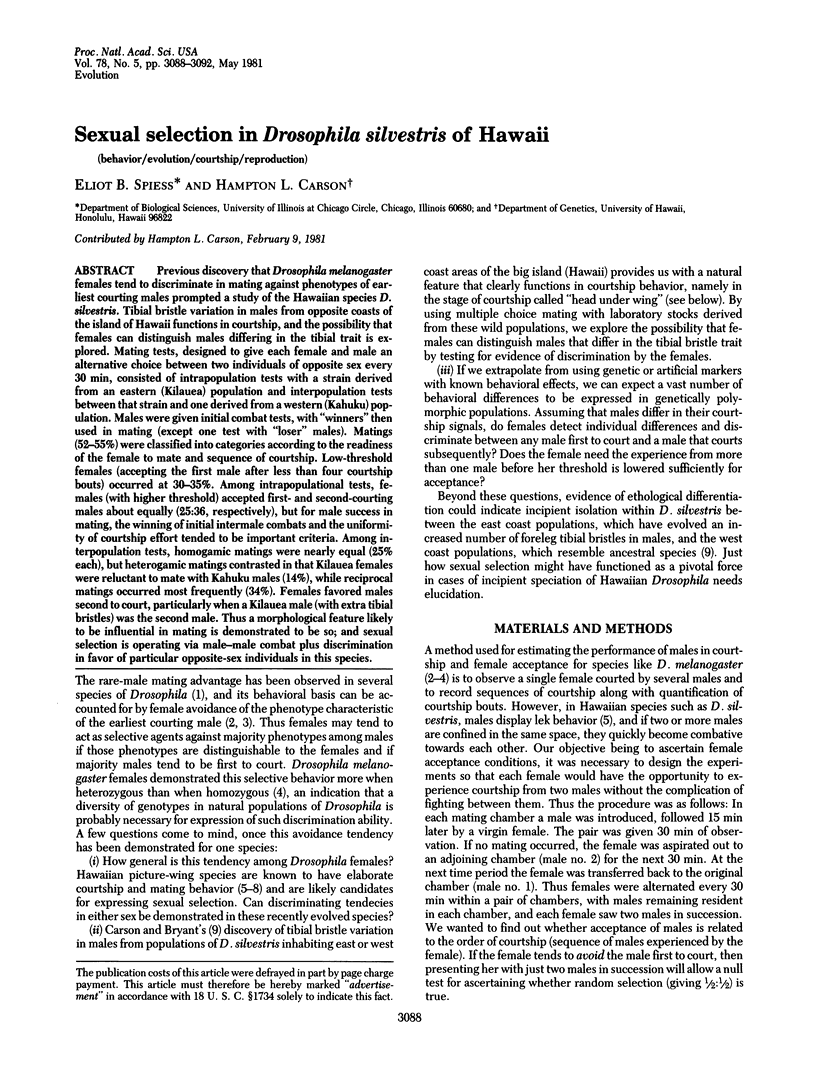
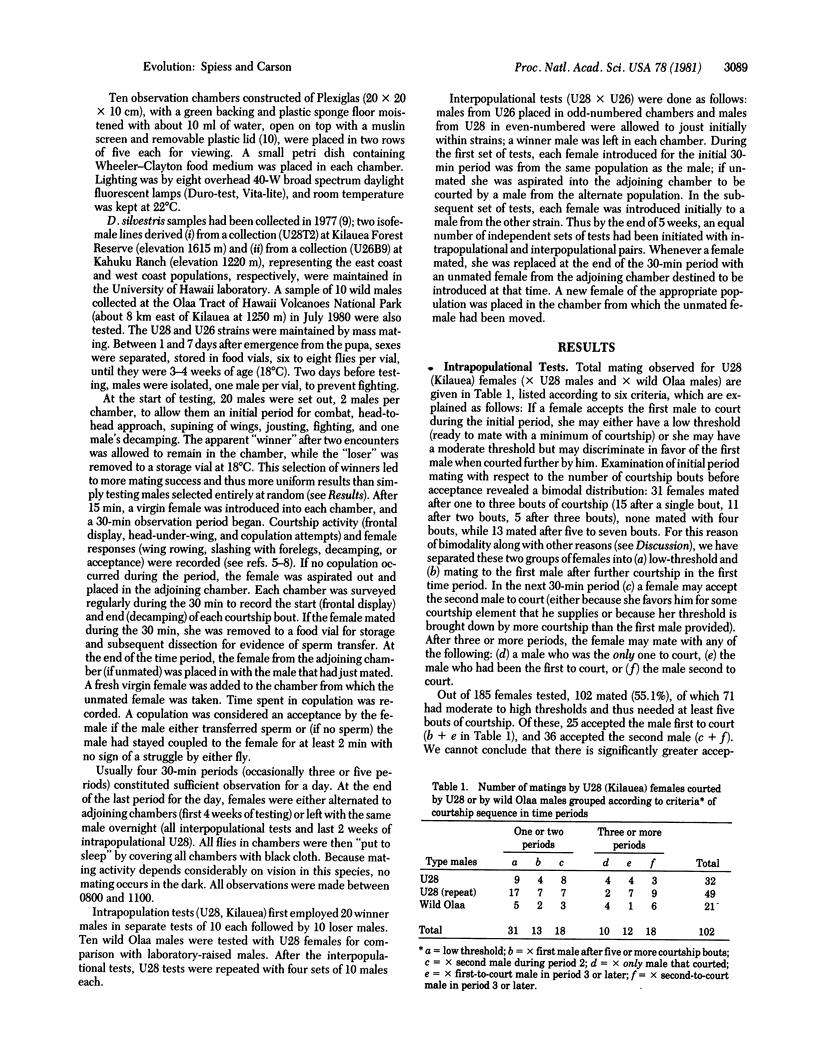
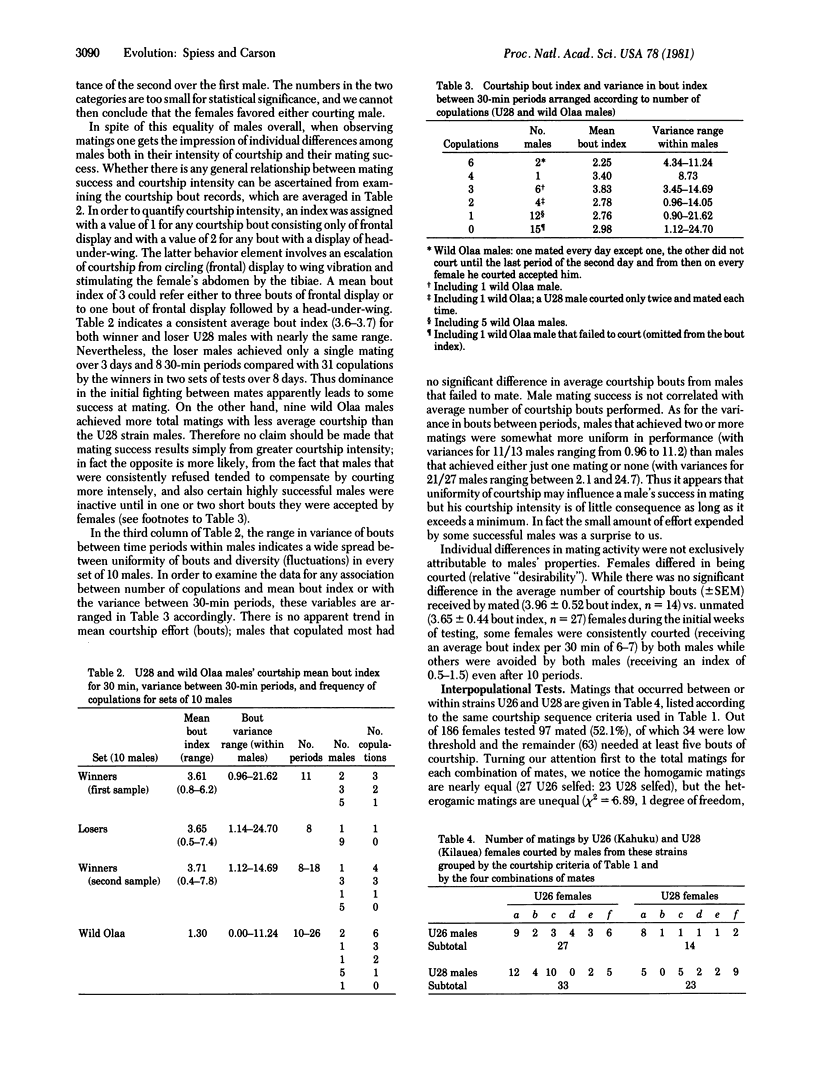
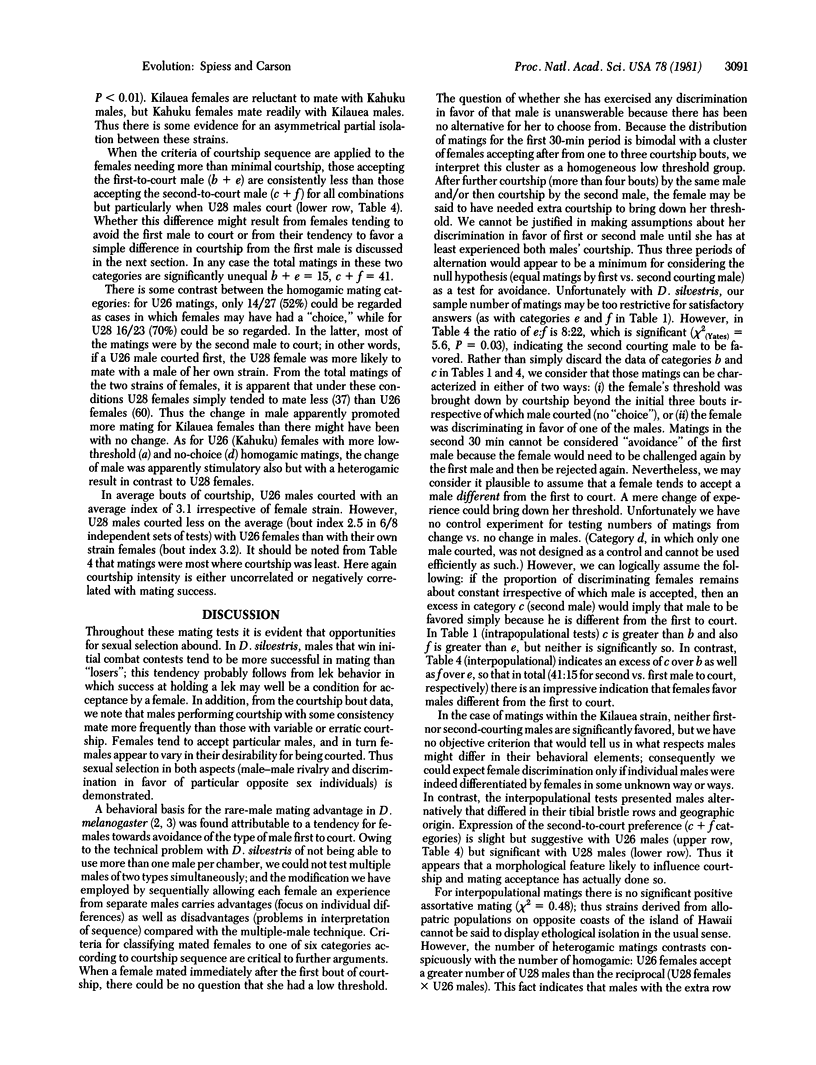
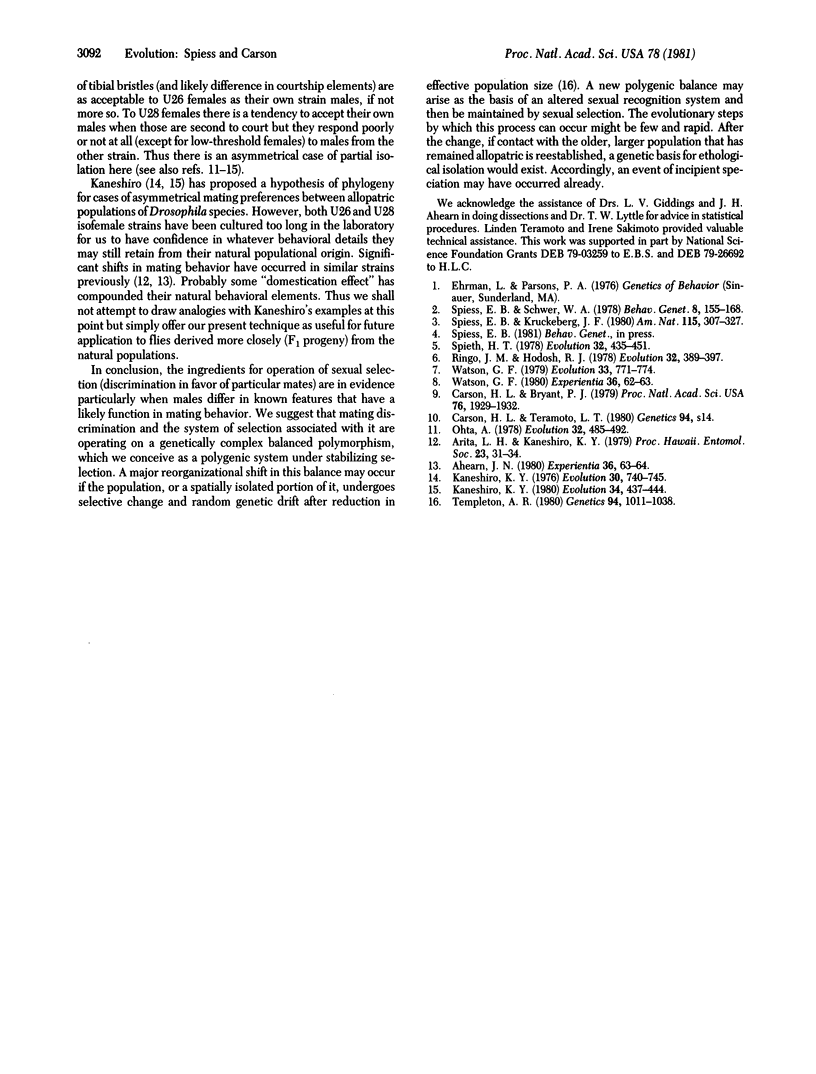
Selected References
These references are in PubMed. This may not be the complete list of references from this article.
- Arita K., Nii S. Effect of culture temperature on the production of Marek's disease virus antigens in a chicken lymphoblastoid cell line. Biken J. 1979 Mar;22(1):31–34. [PubMed] [Google Scholar]
- Carson H. L., Bryant P. J. Change in a secondary sexual character as evidence of incipient speciation in Drosophila silvestris. Proc Natl Acad Sci U S A. 1979 Apr;76(4):1929–1932. doi: 10.1073/pnas.76.4.1929. [DOI] [PMC free article] [PubMed] [Google Scholar]
- Spiess E. B., Schwer W. A. Minority mating advantage of certain eye color mutants of Drosophila melanogaster. I. Multiple-choice and single-female tests. Behav Genet. 1978 Mar;8(2):155–168. doi: 10.1007/BF01066872. [DOI] [PubMed] [Google Scholar]
- Templeton A. R. The theory of speciation via the founder principle. Genetics. 1980 Apr;94(4):1011–1038. doi: 10.1093/genetics/94.4.1011. [DOI] [PMC free article] [PubMed] [Google Scholar]


